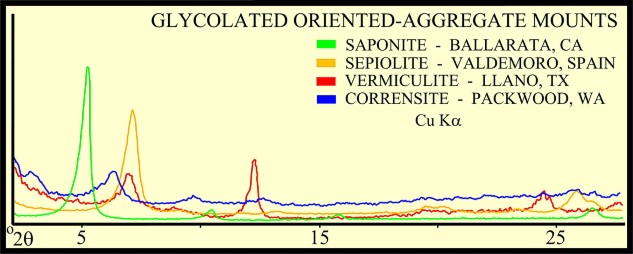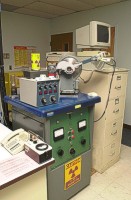 |
A Laboratory Manual for X-Ray Powder Diffraction

| Table of Contents | X-Ray Diffraction | Methods | Clay Minerals | Flow Diagrams |
Size and composition are the most fundamental attributes of sediments. Although optical microscopy
 can be used to readily identify sand and
coarse silt-sized crystalline material, X-ray powder diffraction is the most common technique used to study the characteristics of crystalline structure and to determine the mineralogy of finer grained sediments, especially clays. As a method, X-ray diffractometry is attractive because of its speed and ease of performance, and because it requires only small amounts of material, is nondestructive, and can be used to perform semi-quantitative analyses of poly-mineralic mixtures.
can be used to readily identify sand and
coarse silt-sized crystalline material, X-ray powder diffraction is the most common technique used to study the characteristics of crystalline structure and to determine the mineralogy of finer grained sediments, especially clays. As a method, X-ray diffractometry is attractive because of its speed and ease of performance, and because it requires only small amounts of material, is nondestructive, and can be used to perform semi-quantitative analyses of poly-mineralic mixtures.
This report is presented as an abridged guide for laboratory technicians and students interested in X-ray powder diffraction methodology. The principles of diffractometry and descriptions of clay mineralogy condensed in this report have been discussed in many texts. They are provided here solely to broaden the perspective and understanding of the user. Furthermore, only some of the preparatory and interpretive methods presented herein are original. Users are strongly encouraged to consult the original work cited in the text and in bibliographies associated with each section for a more complete discussion of a method's accuracy and applicability.